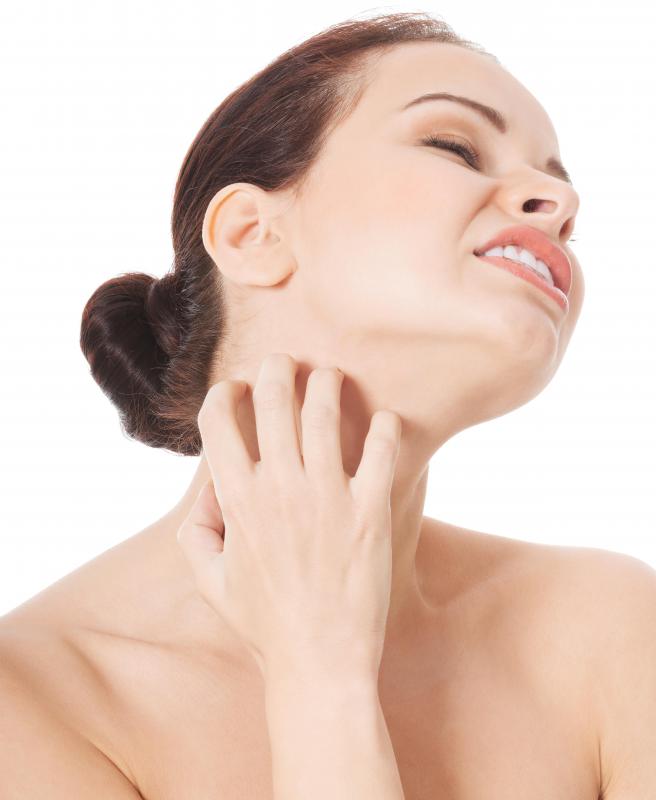At TheHealthBoard, we're committed to delivering accurate, trustworthy information. Our expert-authored content is rigorously fact-checked and sourced from credible authorities. Discover how we uphold the highest standards in providing you with reliable knowledge.
What is Pityriasis Versicolor?
Pityriasis versicolor, also known as tinea versicolor, is a type of skin infection caused by a yeast known as Pityrosporum orbiculare. Typically, a rash appears on the neck, upper arms and chest. At first, the rash consists of small patches which are a different color from the rest of the skin. The patches may become itchy and scaly, and may grow, merge, or spread to the thighs and abdomen. A number of antifungal medications are available to treat the condition, and other names it is known by include dermatomycosis furfuracea and tinea flava.
Pityrosporum orbiculare is found on the skin of most people, where it does not usually cause problems. An overgrowth of the yeast leads to Pityriasis versicolor, and this more frequently occurs in association with increased sweating and sebum production. For this reason, Pityriasis versicolor is more common in warmer climates and in the summer months. Those who are most frequently affected by the condition include teenagers and people whose immune systems are affected by drugs or illnesses such as AIDS. Although it is a common disease, it is not possible to catch Pityriasis versicolor from another person.

Diagnosis of Pityriasis versicolor involves distinguishing the condition from other fungal diseases with similar symptoms. A doctor may take scrapings of affected skin to examine under a microscope, to see if the Pityrosporum orbiculare yeast is present. In another test, infected areas of skin are viewed using a special light known as a Wood's light, which causes Pityrosporum orbiculare to glow green or yellow.

The first treatment option for Pityriasis versicolor is normally the application of an antifungal cream or lotion. Often this can take the form of a selenium sulphide or ketoconazole shampoo, which is spread over wet skin for ten minutes each day, for a total of ten days. Other methods of applying these shampoos exist and a doctor will be able to advise on the most suitable treatment course for an individual patient. Antifungal creams are sometimes used but they are less effective at covering large areas of skin.

If Pityriasis versicolor persists, a doctor might recommend a course of antifungal tablets. Following successful treatment, it is possible that any pale patches on the skin may take several months to fade. In some people, the infection tends to come back repeatedly, and they may need to take medication regularly to guard against recurrence. Fortunately, Pityriasis versicolor is not dangerous, but a rash of pale skin patches may look unsightly on darker skin.
AS FEATURED ON:
AS FEATURED ON:













Discuss this Article
Post your comments